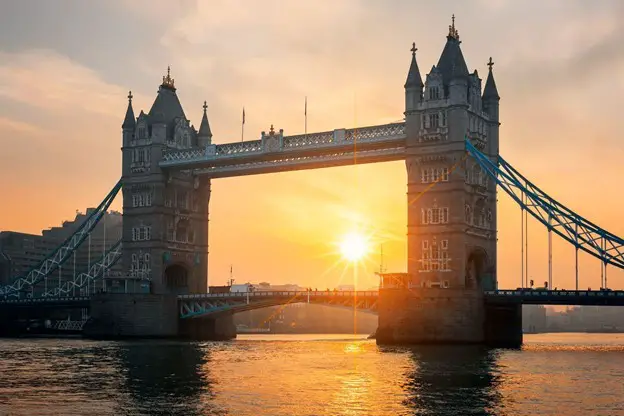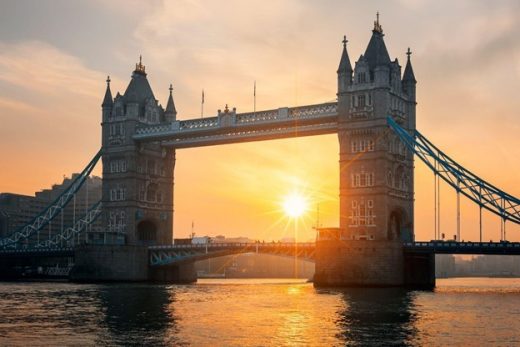The most famous architectural buildings in UK, British building design, English student housing advice
Most Famous Architectural Buildings in UK Guide
post updated 16 February 2024
The United Kingdom has an extremely diverse range of historic and modern attractions. Tower of London, National Gallery, Tate Modern, London Eye, and others are among the most well-known attractions. Aside from these attractions, visitors, residents and students living in various different parts of the United Kingdom like student housing in London or student housing in Nottingham can learn about the United Kingdom’s rich and diverse history by visiting some of the country’s landmarks.
From Buckingham Palace to King’s College, the nation’s structures have a wealth of architectural, artistic, and historical significance. History lovers, royal aficionados, curious individuals, families, and children will enjoy many of the buildings in the United Kingdom.
Most of these structures also offer guided tours, workshops, and exhibitions that are appropriate for both locals and visitors. Continue reading to learn about the most popular and magnificent structures in the United Kingdom.
6 September 2021
The Most Famous Architectural Buildings in UK
St. Paul’s Cathedral
With its famous dome standing tall against the London skyline for almost 300 years, St. Paul’s Cathedral is well-known around the world. The cathedral is the famous mother church of the Diocese of London and the seat of the Bishop of London. It is historically and religiously significant, as the original church on this location was established in AD 604. On the cathedral floor, visitors, residents and even students residing in student accommodation in London can learn about England‘s history, see the crypt where national heroes are interred, climb the renowned dome to hear the Whispering Gallery’s unique acoustics, and gaze out over London from the Stone and Golden Galleries.
Buckingham Palace
Along with Big Ben, London Bridge, and the London Eye, Buckingham Palace is undoubtedly the most well-known landmark in the United Kingdom. The Palace is Queen Elizabeth II’s official London residence and is steeped in centuries of British royal history. The Palace’s staterooms frequently hold formal events such as state visits and other events involving royal family members and charity, with 775 rooms and London’s most extensive private garden. From July to September, visitors to Buckingham Palace can stroll through the sumptuous staterooms and marvel at the ornate decorations, custom-made furnishings, and antique art. The Changing of the Guard event is also a popular attraction for visitors.
In June and July, the world-famous ritual takes place every day at 11 a.m., and from August through May, Mondays, Wednesdays, Fridays, and Sundays.
Wales Millennium Centre
In Cardiff, the Wales Millennium Centre, the nation’s capital, has become a centre for the performing arts. Wales Millennium Centre was designed by Jonathan Adams of Percy Thomas Architects, a local firm, and has a gorgeous façade as well as an interior. The WMC features a gigantic hull-shaped, copper-coloured roof, garnering it the nickname – the Armadillo. It is arguably the most eye-catching building along Cardiff Bay. Three world-class theatres, various function rooms, rehearsal rooms, and dance studios for performers, as well as a foyer with bars and restaurants, make up the interior.
Visitors can appreciate the building’s design, purchase tickets for a show at the ticketing office, or dine at the restaurants, coffee shops, or bars in the lobby.
The Shard
The Shard, one of the most visible structures on London’s skyline, is the city’s newest landmark. It is a 95-story skyscraper with a height of 309.6 metres (1,016 ft), is the tallest building in London. It was built in 2012 and is currently the highest structure in the United Kingdom. The Shard’s 360-degree viewing platform placed 244 metres (800 feet) above the earth on the 72nd level, allows visitors to take in all of London’s splendour, from the Thames to the London Bridge and Big Ben. An open sky terrace is also located on this floor. Through several multimedia screens, history aficionados and interested visitors can immerse themselves in fascinating stories about London’s rich history.
Caernarfon Castle
Caernarfon Castle, also known as Carnarvon Castle or Caernarvon Castle, is a mediaeval Welsh fortress on the banks of the renowned River Seiont in the Welsh county of Gwynedd. The castle was later transformed into a stronghold by King Edward I of England in 1283. The castle sprang from a violent rivalry between England and Wales and the Welsh legend of Macsen Wledig. This magical fortress was built in the imperial Roman style and had 5.5-meter (18-foot) thick outer walls. Eagle Tower, which once housed the royal chambers, is one of the most popular tourist attractions.
Royal Pavilion
Due to its location in the seaside city of Brighton and Hove, the Royal Pavilion is also known as the Brighton Pavilion. King George IV ordered the construction of this opulent mansion, which began in 1787. The Palace has been a royal residence for over 200 years, but it has also served as a civic facility and a hospital during World War I. Due to its awe-inspiring interiors, Royal Pavilion has become a must-see site in London. The Pavilion was built in the Indo-Saracenic style, which at that time was particularly popular in India in the 19th century. Visitors to the pavilion can wander through royal bedrooms, a saloon, the Great Kitchen, the music room, and more to get a flavour of the royal lifestyle.
Lincoln Cathedral
One of England’s most revered religious structures, Lincoln Cathedral was built in 1075 by William the Conqueror. The Cathedral Church by the Blessed Virgin Mary of Lincoln, Lincoln Minster, and St. Mary’s Cathedral are all names for the vast Gothic-styled structure. This little-known gem is around 230 kilometres (143.5 miles) from London and previously housed one of the four copies that are remaining of the original Magna Carta, which has since been relocated to Lincoln Castle. Architects from all over the world admire Lincoln Castle for its breathtaking external and interior design.
Edinburgh castle
Edinburgh Castle, which stands tall against the skyline of Scotland’s capital city, goes back to the 12th century. Since its initial erection, the castle has seen numerous additions. The castle was one of Scotland’s most important fortresses and has seen several wars, including the Jacobite uprising of 1745 and the Wars of Scottish Independence in the 14th century. With panoramic views of the city below, historical tours that cover the battles and royal residences throughout history, and the beautiful Crown Jewels, Edinburgh Castle is Scotland’s most-visited paid tourist destination.
King’s College Chapel
King’s College Chapel is the most well-known and well-known structure in Cambridge, which is around 50 miles north of London. The chapel, which was erected between 1446 and 1515 by three English monarchs, may be an outstanding example of Perpendicular Gothic English architecture. Up until 1536, more improvements were built, such as the huge stained glass windows and early Renaissance rood screen. With over 16 enormous windows on all sides of the chapel, a beautiful stone ceiling, and an organ – all supported by a big oak rood screen, the chapel is captivating on both the inside and out. The huge structure is still in use as a place of religious worship for King’s College students and visitors.
Beetham Tower
While the majority of the structures in this article are old, Manchester’s Beetham Tower is a modern marvel. The 47-story skyscraper was completed in 2006 at the cost of GBP 150 million (USD 197 million). The structure is 554 feet (169 metres) tall, making it Manchester’s highest fully completed structure. The structure can be visible from ten English counties due to its towering height. The Hilton Manchester Deansgate occupies the first 22 floors of the structure, while the famed Cloud 23 bar is located on level 23, which is marked by a 4-meter (13.1-foot) cantilever.
The Shard
The Shard, one of the most visible structures on London’s skyline, is the city’s newest landmark. The Shard, a 95-story skyscraper with a height of 309.6 metres (1,016 ft), is the tallest building in London. It was built in 2012 and is currently the highest structure in the United Kingdom.
The Shard’s 360-degree viewing platform placed 244 metres (800 feet) above the earth on the 72nd level, allows visitors to take in all of London’s splendour, from the Thames to the London Bridge and Big Ben. An open sky terrace is also located on this floor. History aficionados and interested visitors can immerse themselves in fascinating stories about London’s rich history through several multimedia screens.
Are you looking for guidance in finding your ideal accommodation?
Amber serves students around the world by offering the very best options and experiences because they recognise its value.
They are up to date with covid-19 protocols and would be thrilled to help you in booking the perfect student accommodation for you!
Author’s Bio:
Anannya Chaudhary is a content writer living in Delhi. As soon as the clock strikes the completion of the last working hour of her office shift, you will find her on the way to her favourite food joint, brimming with joy and excitement to devour a plate of her all-time favourite, chicken momos.
When going gets rough, you will find her falling back to her old and trustee companion, ‘The Diary of a Wimpy Kid’ to reboot. You could classify her as that one designated annoying friend who makes you cry if you resist them dragging you to the dance floor.
Comments on this The Most Famous Architectural Buildings in the UK article are welcome.
Building Articles
Residential Architecture
Comments / photos for the The Most Famous Architectural Buildings in UK page welcome







